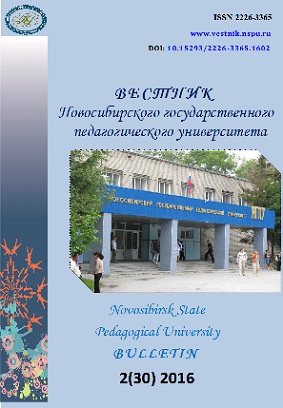Образный компонент ментальной структуры смех
в русской и английской языковых картинах мира
The metaphorical component of the mental structure laugh in the Russian and English language pictures of the world
Author(s): Svetlana Andreevna Popova Subject(s): Philology
Published by: Новосибирский государственный педагогический университет
Keywords: Language picture of the world; mental structure; concept; concept-image; concept-scenario; lexeme; metaphor; definitional analysis; discourse analysis
Summary/Abstract: Τhe article is devoted to research of the mental structure «Laugh» in the Russian and English language pictures of the world. The paper emphasizes the complexity of its organization in both languages. It is noted that the analyzed mental structure can be considered as a con-cept-image and as a concept-scenario. The purpose of the article is modeling the figurative component of the mental structure «Laugh» in the Russian and English language pictures of the world and detection of the national peculiarities. The author uses metaphorical approach to the description of mental structure. The researcher identifies and describes the metaphors presented in both languages, such as anthropomorphic, zoomorphic, naturomorphic, morbial metaphors. Laughter is personified in the Russian and English languages (an anthropomorphic metaphor). Subjects of laughter appear in images of various animals: horse, pig, donkey, goose, etc. (a zo-omorfic metaphor).The naturomorphic metaphor combines the following: laughter as a sub-stance, material, liquid, medicine, weapon or shield. The Image of laughter as an illness is dif-ficult and multidimensional. It is developed in the scenario of an illness and an unhealthy condi-tion of the subject of laughter. This situation in both language pictures of the world includes certain physiological symptoms and features of behavior of the person who is in condition of strong laughter: the problems with digestion, breath and mentality, change in completion, etc. It is emphasized that metaphors characterize emotional states of the subject and emotional as-sessments of the listener or object of laughter. The author concludes by emphasizing the fact: common for the description of laughter and emotions are the anthropomorphic, substance and liquid metaphors, which include synesthetic flavor, color, tactile metaphors.
Journal: Вестник Новосибирского государственного педагогического университета
- Issue Year: 6/2016
- Issue No: 2
- Page Range: 104-114
- Page Count: 11
- Language: Russian

